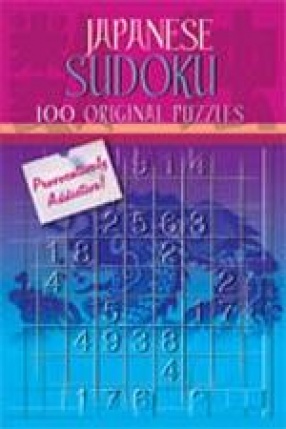Have you been bitten by the Sudoku bug? This is a monster on the loose, and it is out to eat your brain. Pitiless in its advance and deadly in its cunning, Sudoku, a seemingly simple numbers game, has become the biggest puzzle craze to hit the world since the Rubik’s Cube. Sudoku (ORIGIN Japanese. Sometimes spelled Su Doku), is a placement puzzle, also known as ‘Number Puzzle’ in some parts of the world. The word Sudoku means ‘number solving’ in Japanese. The original name was Suji Wa Dokushin Ni Kagi meaning ‘the numbers must occupy once only’ which has been quickly abbreviated to Su Doku ‘number only’ or ‘number single’. Sudoku consists of a square grid to be filled in with symbols. The symbols are usually the numbers 1 to 9 and that is probably the reason why these puzzles are often assumed to be numerical puzzles; but any set of distinct symbols will do; letters, shapes, or colours may be used without altering the rules. The grid layout is reminiscent of other newspaper puzzles like crosswords and chess problems. The aim of the puzzle is to enter a number from 1 through 9 in each cell of a grid, most frequently a 9X9 grid made up of 3X3 sub-grids (called ‘regions’), starting with various numerals given in some cells (the ‘givens’). Each row, column and sub-grid or region must contain only one instance of each numeral. Completing the puzzle requires patience and logical ability. Scientists have identified Sudoku as a classical meme – a mental virus which spreads from person to person and sweeps across national boundaries.
Japanese Sudoku
In stock
Free & Quick Delivery Worldwide
Bibliographic information
Title
Japanese Sudoku
Author
Edition
1st ed.
Publisher
Orient Paperbacks, 2006
ISBN
9788122203974
Length
128p.
Subjects








There are no reviews yet.